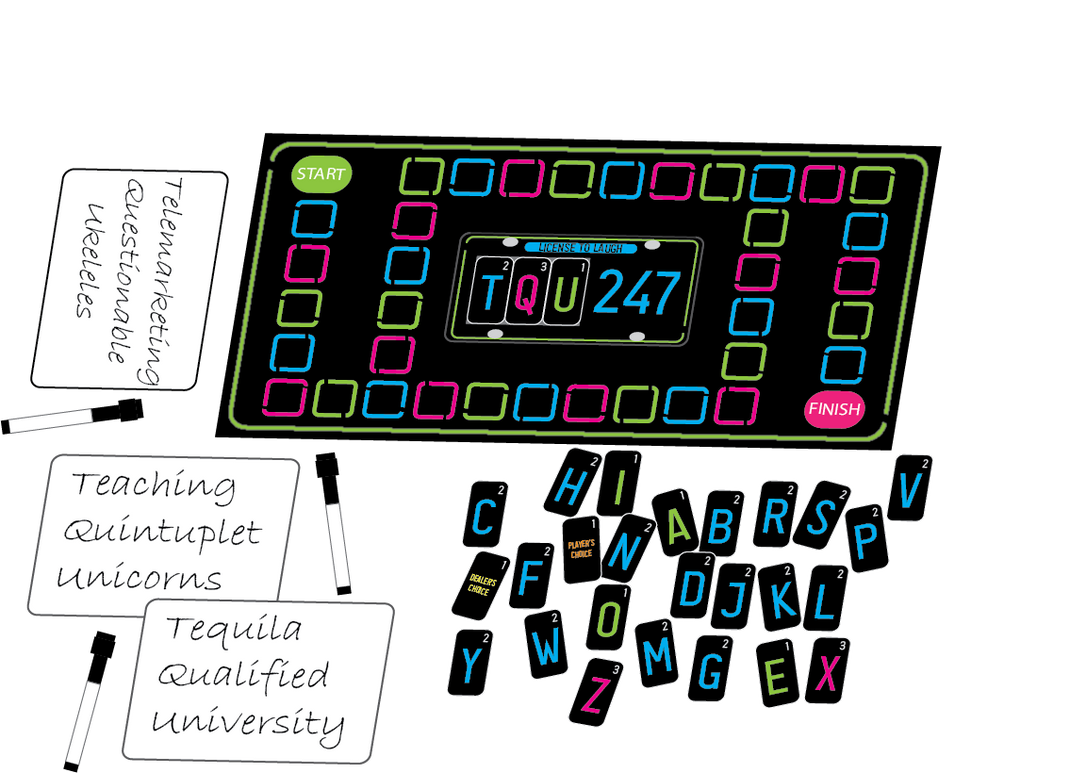
 Loading... Please wait...
Loading... Please wait...Save Money. Grow Your Own!
Fast Plain Box Shipping.
We ship to the US & Canada.
Posted on 25th Apr 2024

Introduction: In a world filled with screens and digital distractions, there's something undeniably refreshing about gathering around a table with friends or family to enjoy a good old-fashioned board game. If you're on the lookout for a game that will have you in stitches while testing your quick thinking and creativity, look no further than LCS 2 LAF (License to Laugh). LCS 2 LAF is not your average word game—it's a wild ride through the realms of randomness, where players must conjure up three-word phrases on the fly, all while adhering to the quirky rules set by the ever-powerful judge. Let's delve into the delightful chaos that is LCS 2 LAF.
The Concept: At its core, LCS 2 LAF is a game of wit, creativity, and, most importantly, laughter. The premise is simple yet ingeniously entertaining: players take turns rolling dice and moving around the board, aiming to reach the finish line by successfully navigating a series of word challenges. But here's the twist—each word in the phrase must begin with letters drawn at random, adding an extra layer of unpredictability and hilarity to the game.
Gameplay Mechanics: The gameplay of LCS 2 LAF is easy to grasp, making it accessible to players of all ages and skill levels. To start, players roll the dice and move their game pieces accordingly. Upon landing on a designated space, the player draws a card that presents them with a unique set of letter combinations. Using these letters as a starting point, the player must quickly devise a three-word phrase that will impress the judge.
But who is the judge, you might ask? Ah, that's where the fun truly begins. In LCS 2 LAF, one player takes on the role of the judge for each round, wielding the power to determine which phrase reigns supreme. The judge's decision is final, and their criteria for a winning phrase can range from the most absurd to the downright clever, keeping players on their toes and fueling the laughter-filled atmosphere.
Strategy and Creativity: While luck certainly plays a role in the letters drawn and the judge's whims, LCS 2 LAF also rewards strategic thinking and quick wit. Players must think fast to come up with phrases that not only adhere to the random letter constraints but also tickle the judge's funny bone. It's a delicate balance of spontaneity and cunning, as players vie for the coveted title of wordplay champion.
Moreover, LCS 2 LAF encourages boundless creativity. With thousands of possible letter combinations and endless phrase possibilities, no two games are ever alike. Whether you're crafting a pun-laden masterpiece or embracing the absurdity of the letter constraints, LCS 2 LAF sparks the imagination and unleashes the inner wordsmith in everyone.
Laughter and Bonding: At its heart, LCS 2 LAF is a game designed to bring people together and elicit uproarious laughter. As players embark on their wordplay adventure, the room fills with joyous banter, witty retorts, and infectious giggles. Whether you're playing with old friends, family members, or new acquaintances, LCS 2 LAF fosters connections and creates lasting memories that extend far beyond the game board.
Conclusion: In a world where laughter is often the best medicine, LCS 2 LAF emerges as a shining beacon of hilarity and camaraderie. With its simple yet addictive gameplay, boundless creativity, and infectious sense of fun, LCS 2 LAF is sure to become a staple of game nights everywhere. So gather your loved ones, sharpen your wits, and get ready to embark on a wordplay adventure like no other with LCS 2 LAF. After all, when it comes to laughter, there's no such thing as too much of a good thing.